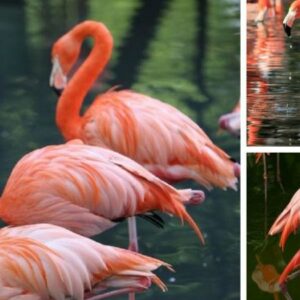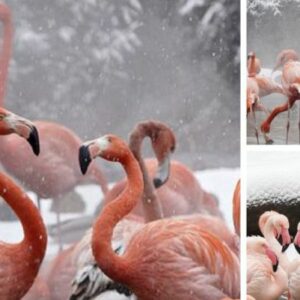The Formation of Salt Lakes
The Arid Wonderland

Salt lakes are predominantly found in arid and semi-arid regions where high temperatures and low precipitation rates create the ideal conditions for salt accumulation. As water from streams and rivers flows into these regions, it collects in shallow depressions, where the sun’s relentless heat evaporates the water, leaving behind a treasure trove of dissolved salts.
Saline Minerals at Play
The primary salt responsible for the formation of these lakes is sodium chloride, or common table salt. However, these lakes also contain a rich variety of other minerals, including magnesium, calcium, and potᴀssium salts. Over millennia, these salts accumulate, turning the water increasingly saline and creating the famous salt crusts that can be several meters thick.
Ecology of Salt Lakes
Survival Against the Odds

Salt lakes may seem harsh and lifeless, but they are far from barren. These environments are teeming with life, showcasing the remarkable adaptability of nature. Some of the hardiest microorganisms on Earth, known as extremophiles, thrive in the extreme conditions of salt lakes. These microorganisms play a crucial role in breaking down organic matter and helping to create a fragile ecosystem.
Haven for Unique Species
While flora and fauna are limited in salt lakes, those that do exist are often unique and specially adapted to these harsh surroundings. Salt-loving plants, such as halophytes, grow along the lake’s edges and provide critical habitat for various species of insects, birds, and small mammals.
The Impact on Nature and Humans
A Valuable Resource

Salt lakes have long been valued for their economic significance. The harvested salts serve as essential resources for a wide range of industries, including agriculture, food production, and chemical manufacturing. These lakes support local economies and provide livelihoods for countless people.
The Environmental Balance
Yet, the extraction of salt from these ecosystems comes at a cost. Altering salt lakes can disrupt their fragile ecosystems and lead to the degradation of surrounding land. It’s essential to strike a balance between human exploitation and the preservation of these unique environments.
Preservation and Conservation
Sustainable Practices

As the world becomes increasingly aware of the importance of preserving natural habitats, efforts to protect salt lakes are gaining momentum. Sustainable practices in salt harvesting, coupled with the conservation of surrounding ecosystems, are helping ensure the continued existence of these natural wonders.
Educational and Ecological Value

Salt lakes also offer tremendous educational and ecological value. Scientists study these ecosystems to better understand extremophiles and their potential applications in biotechnology. Additionally, they provide valuable insights into Earth’s geological history and climate change.
Salt lakes, with their stark beauty and unique ecological adaptations, are a testament to the remarkable diversity of our planet. While they’ve long been a resource for human societies, they also serve as invaluable sources of knowledge and inspiration. As we explore these natural wonders, we’re reminded of the delicate balance required to preserve their pristine environments while harnessing their economic potential. Salt lakes continue to be enigmatic marvels, mirroring both the mysteries of the natural world and our ability to protect and conserve it for generations to come.





